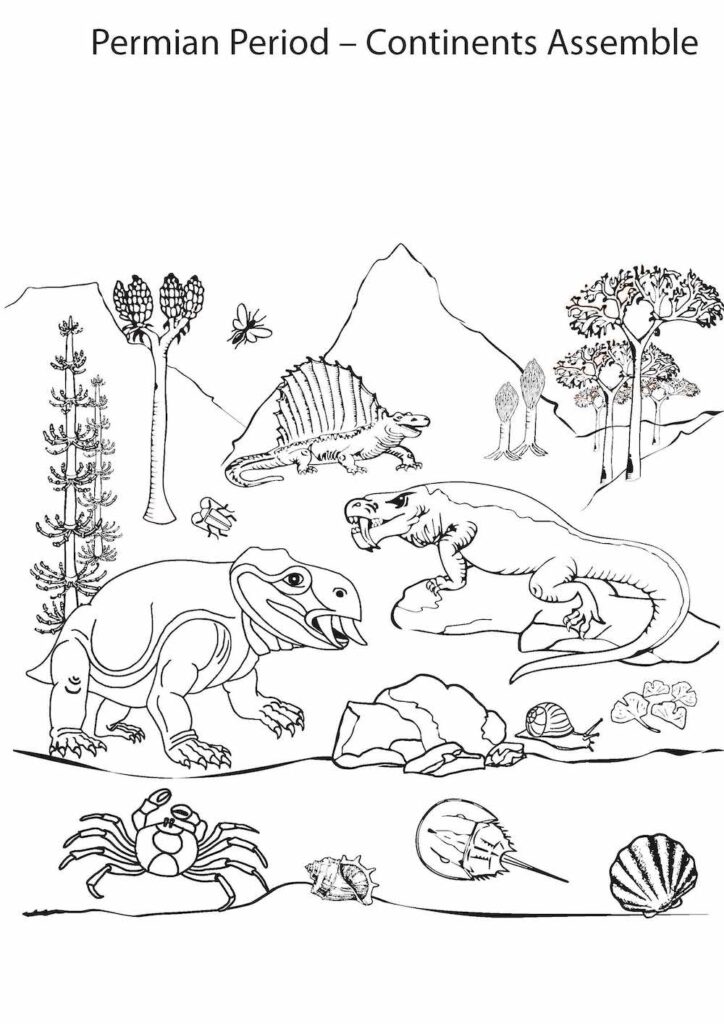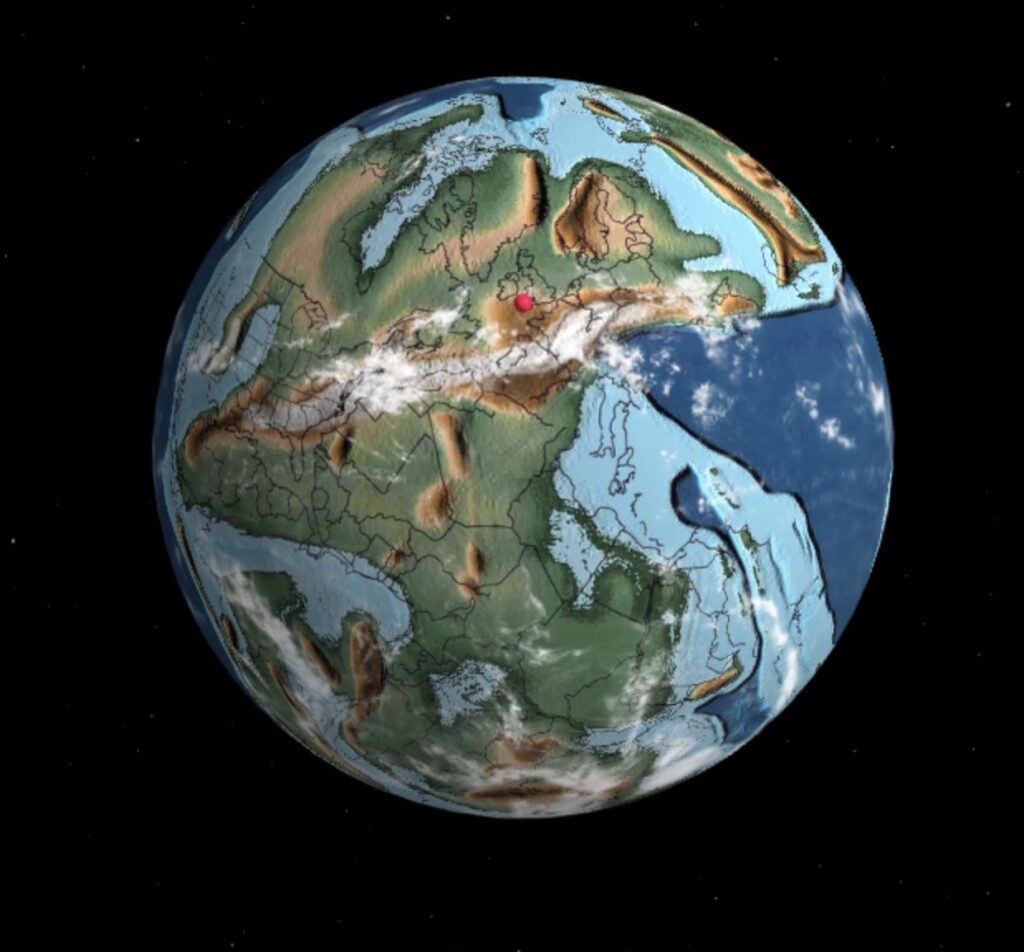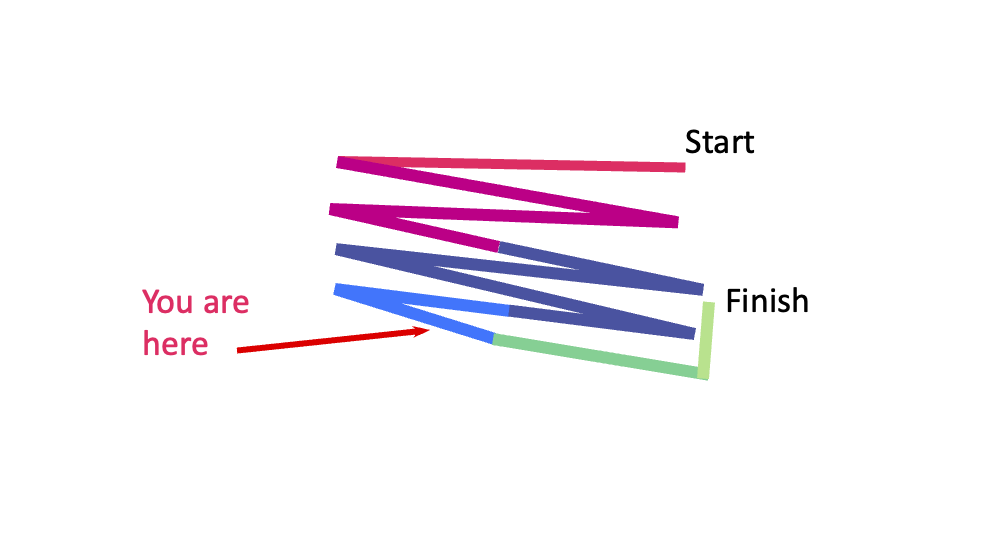Paleozoic Era 6: Permian Period
Key Events
- Landmasses converge into a supercontinent, called Pangea.
- Two groups of land animals develop, the synapsids (ancestors of mammals) and the sauropsids (ancestors of the dinosaurs and modern reptiles and birds).
- The largest mass extinction in Earth’s history occurs at the end of the Permian Period, probably caused by massive volcanic eruptions in Siberia.
- More than 95% of all species become extinct.

Facts, Debates & Trivia
- The Permian Period is named after the Perm region in Russia’s Ural Mountains.
- The granite ‘backbone’ of Cornwall is formed during this period.

Conditions
- The formation of Pangea leads to drier conditions where reptiles dominate.

Timeline
298.9 – 251.9 million years ago
(47 million years)


Where have you reached on the trail?


